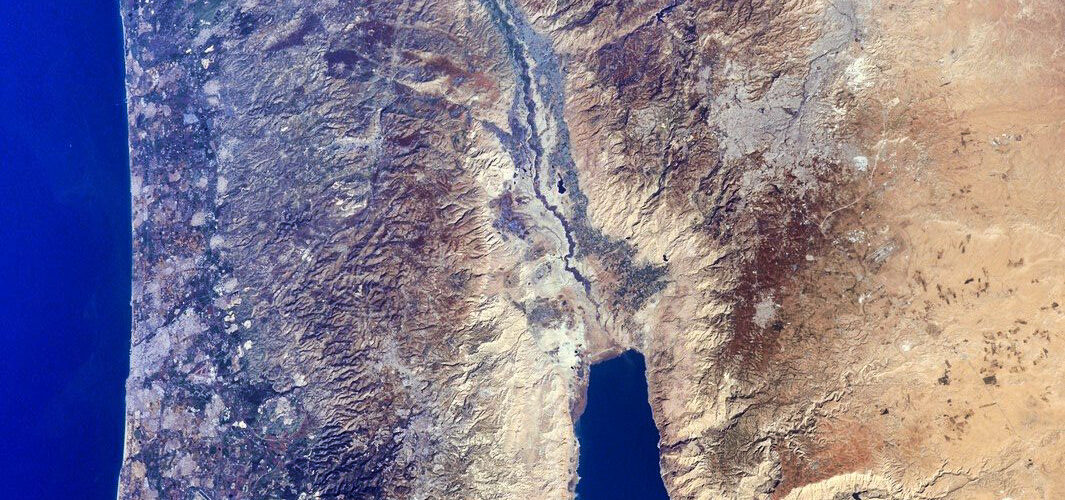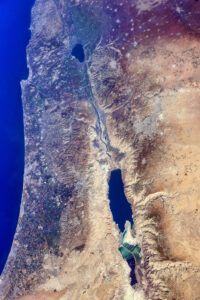There is a Sea
Podcast: Play in new window | Download
Subscribe: RSS
SUBJECT: Song Sermon
PROPOSITION: In this song, the writer illustrates how to have a giving spirit by looking at both the Sea of Galilee and the Dead Sea. He uses them as metaphors for what happens to us when we give punctuating it with the example of Christ.
OBJECTIVE: Each person should examine his life to see if he is giving freely and generously to others.
INTRODUCTION:
1. Read: 2 Corinthians 8:9
2. About the Text:
1) Paul discusses how Christ gave Himself for us.
2) He did this so that we can be rich.
3) What should our attitude be in following His example?
4) The song, “There Is A Sea” illustrates this.
5) It was written and composed by Lula Klingman Zahn in 1921.
3. Ref. to S, T, P, O, and A.
DISCUSSION:
I. The Sea of Galilee
1. “There is a sea which day by day receives the rippling rills, and streams that spring from wells of God, or fall from cedared hills; but what it thus receives it gives with glad unsparing hand: a stream more wide, with deeper tide, flows on to lower land.”
2. Its characteristics.
1) This is the sea of Galilee (aka Kenneret, Tiberias, Chinnereth in the OT).
2) It is really a fresh-water lake.
3) It is located in North Israel near Syria just south of Mount Hermon.
4) It is 13 miles long by 8 miles wide.
5) Its deepest point is 141 feet.
6) It shore length is around 33 miles.
7) The Jordan river flows into it from the North and out of it from the south.
8) It is fed mainly by the snowmelt of Mt. Hermon.
9) It receives between 500 million to 1 billion cubic meters of water annually.
10) Unabated, the Sea of Galilee would give off around 3 billion cubic meters of water annually to the Jordan River, but it is currently limited to 50,000,000.
11) It has an abundance of living creatures in its waters: 27 species of fish, muscles, insects, etc.
12) The lake is ~700 feet below sea level making it the lowest fresh-water body on earth.
3. Its history.
1) This lake thrives with history since people have settled it shores since ancient times.
2) There were numerous settlements in the New Testament: Capernaum, Tiberius, Bethsaida, Chorazin, etc.
3) Jesus visited these villages and preached the gospel there.
4) Several of the apostles came from here such as Peter, Andrew, James, and John.
5) Then He said to them, “Follow Me, and I will make you fishers of men.” (Matthew 4:19).
6) Where Jesus preached the Sermon On The Mount.
7) This is the lake where Jesus stilled the storm (Matthew 8:23-27).
8) This was the lake on which Jesus walked on the water (Matthew 14:22-33).
9) Great spiritual life came from in and around the Sea of Galilee.
4. Emphasis of the song.
1) The song emphasizes that this sea is alive because what it receives it gives.
2) It is constantly being refreshed by the water that flows into it.
3) It is constantly supplying water to the Jordan river below it.
4) It takes both the inflow and the outflow for the water to remain viable.
5) As a result, the sea sustains and supports life in its fresh waters.
II. The Dead Sea
1. “There is a sea which day by day receives a fuller tide; But all its store it keeps, nor gives to shore nor sea beside; It’s Jordan stream, now turned to brine, lies heavy as molten lead; its dreadful name doth e’er proclaim that sea is waste and dead.”
2. Its characteristics.
1) This is the Dead Sea (aka the Salt Sea, Sea of the Plain, or East Sea).
2) It is located in the Southern part of Israel to the east and southeast of Jerusalem.
3) It is a salt-water lake.
4) It is 1,292 feet below sea level.
5) Its deepest point is around 1300 feet.
6) It is 53 miles long and 10 miles wide.
7) It has a shore length of 84 miles.
8) The Jordan puts in 6 million tons of water every 24 hours.
9) A lot of water evaporates leaving the heavier solids in the water behind.
10) This is why it has a salinity of a little over 34%, nearly 10 times the ocean.
11) Nothing lives in this sea which is why we call it the “Dead Sea.”
3. History
1) Genesis 14:3 records the kings of that area joining together to fight against Chedorlaomer.
2) The destruction of Sodom and Gomorrah (Genesis 19).
3) The sea acted as a border for the nation of Israel also.
4) David used the area as a hide out when he was fleeing from Saul (1 Samuel 23:29).
5) There were no settlements near this place because it did not sustain life.
4. Emphasis of the song.
1) The song emphasizes that this sea receives more water than the Sea of Galilee.
2) However, it does not have any outflows of water.
3) That is the reason that it turns to brine.
4) The result is that nothing can live in its waters.
5) All the fish that flow into this sea from the Jordan river die very soon after.
III. The Lesson from the Two “Seas.”
1. “Which shall it be for you and me, Who God’s good gifts obtain? Shall we accept for self alone, Or take to give again? For He who once was rich indeed Laid all His glory down; That by His grace, our ransomed race Should share His wealth and crown.”
2. The Lesson
1) The one sea receives and gives and as a result it has an abundance of life.
2) The other sea receives but does not give and it is dead.
3) These two seas are metaphors for how we live.
4) If our life consists of just receiving things and never giving, we will become selfish, greedy, miserable, depressed, and very lonely.
5) If our life consists of both receiving God’s blessings and then using them to give to others, we will have the life of enjoying how others can benefit from those blessings that we give.
6) This is illustrated specifically in the song by the actions of Jesus.
7) “For ye know the grace of our Lord Jesus Christ, that, though he was rich, yet for your sakes he became poor, that ye through his poverty might become rich” (2 Corinthians 8:9).
3. Some other verses that are relevant to the great lesson of this song.
1) “Have this mind in you, which was also in Christ Jesus: who, existing in the form of God, counted not the being on an equality with God a thing to be grasped, but emptied himself, taking the form of a servant, being made in the likeness of men; and being found in fashion as a man, he humbled himself, becoming obedient even unto death, yea, the death of the cross” (Phil.2:5-8).
2) “It is more blessed to give than to receive” (Acts 20:35).
3) This isn’t talking just about giving money.
4) It is talking about giving ourselves away to others.
5) This is what it means to love other people.
CONCLUSION:
1. What are you more like?
1) The Sea of Galilee?
2) The Dead Sea?
2. Invitation


